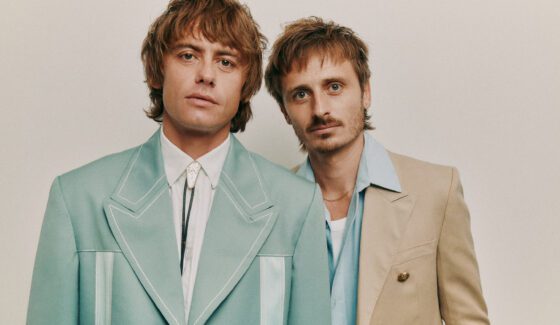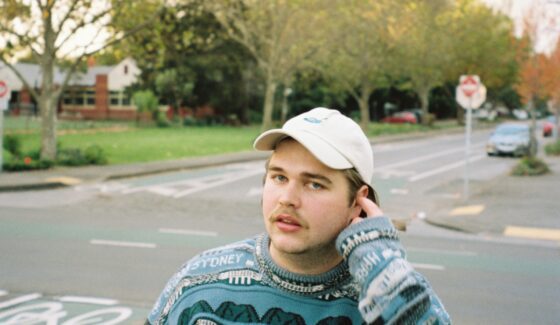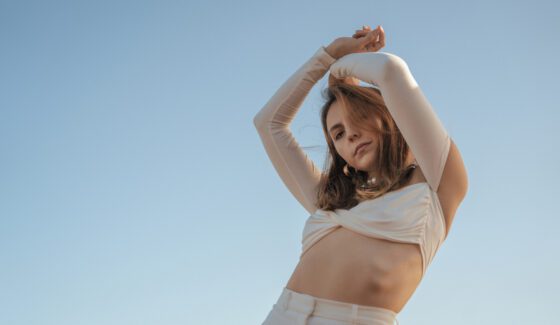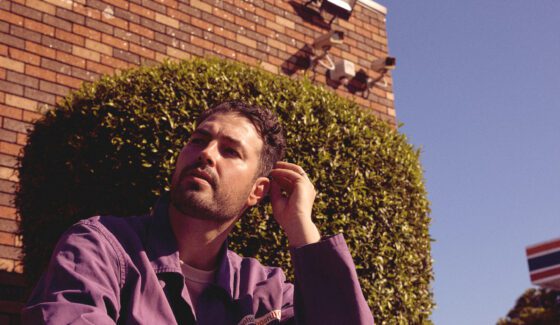Q & A: Stalking Like Candy

Closing out the year with one of the most fascinating and tantalising musical experiences, Stalking Like Candy’s debut album, ‘Punctronika‘ stands strong in its new fangled genre diversification. Behind the mayhem lies a genius mind that we had to crack. Speaking to the album, we also chat about Stalking Like Candy’s musical background and learning just how the sound can shape shift.
What’s your musical background?
Shit, it’s long. Flute and classical guitar through high school. I taught myself piano. I got my first synth—an Ensoniq SD1 in 91 or something. Yep. I’m old. I spent years making quirky sequences with the internal sequencer. I studied composition in the HSC and came top in the state. At some point in high school this guy, Luke Scobie, who was three years too old for our year showed me the Dead Kennedys—that really changed things. As did finding Nine Inch Nails, Aphex Twin, The Pixies, Ween, New Order, The Smiths and Radiohead… I only started recording stuff when I was 22, after my first brush with the square world (an English Lit degree). I worked a lot with an Ensoniq EPS 16+ sampler, guitar pedals and Pro Tools. I prided myself on designing all my own sounds and on detailed midi programming. I made three decent albums through the 2000s (search youtube for ‘Peloton’ for my last project) but couldn’t get my music off the ground, so, being totally broke, and being sick of packing supermarket shelves, I gave up, did a PhD and became a university lecturer. But madness prevailed, and in 2015 I started to write kids songs for a laugh with my friend Eliot Fish (Big Heavy Stuff) and joined a covers band. One thing led to another and I started work on the ‘Punctronika’ album. The great thing now is that I don’t have to wait for some angel to come and save the day—I just record and release my own stuff. The freedom is amazing.
I ask because there’s so many genres interplaying on the album. I suppose your musical palette is quite broad?
Yeah. I pretty much like all genres of music. As long as there is something clever in the track.
The Gambler was the most fascinating moment on the album, personally. Talk about the creation of that track.
Oh, that one’s a journey. I really struggled to pull it together—despite working on it for months I was up to 1am the night before I mixed it battling away. I feel like I totally nailed the last two or so minutes, but it was hard to get the build right through the earlier parts of the song. I wrote the song in late 2016 and at that point laid down most of the guitar parts, but it stalled. I mixed a bunch of other tracks for the album before returning to it. By early 2018 I’d formed a great partnership with Syd Green, who co-produced the album with me—he’s a staggeringly good drummer—so I sent the bones of the track off to him to drop in the drums, and then it was just a matter of working over and over the track in my home studio to try to bring it to life. I found some smashing glass sounds on youtube and dropped them into the intro (a tribute to The Cure’s ‘Disintegration’). I took a chance on the vox at the start and chopped it up. The bass from the middle section (the ‘I am a gambler’ bit) was inspired by Smog’s ‘Bathysphere’—I’d heard it for the first time in a long time at a friend’s funeral. He’d committed suicide and they played the track—his favourite—at the funeral. It’s my little homage to him. Then I looked around my studio and thought, time to get the old flute out, so I dropped that in later in the track. I also sampled this little accordion I have that came from my wife’s late father—another tribute—and included it in the same section. I wanted the finale to be huge, so I drew on the water imagery from earlier in the song – not just the lyrics but the sea-shanty-sounding accordion—and went with this three-part-harmony pirate thing—I put down about 10 vox layers. In the finale, as well as the driving Moog Sub 37 bass, I added a higher DI bass part. I really love how the rhythm of the bass and vox work together—it’s a high point of the album for me, and then how the pirate stuff hands over to the original vocal melody from the start of the song, but this time the melody isn’t chopped, so you can finally hear the words. Then it all dies into this melancholy flute melody. Another highlight is that we ran the backing vox in the quiet bits through an original Leslie rotating speaker—that also adds to the watery quality of the track.
Flick Stun To Kill, and Vampire Six Shot to an extent, has a small hip-hip flavour. What inspired that?
I’ve always loved Cypress Hill and what the Gorillaz do with hip-hop… When I was starting work on Flick Stun To Kill I was also working on a mashup of Cypress Hill’s Insane in the Brain and Gorillaz’ Clint Eastwood (I always start the set with this when I play live). That’s where the hip-hop elements come from. I don’t know where Vampire came from. Maybe I was thinking of that movie Lock Stock and Two Smoking Barrels. Actually, Vampire is a song I wrote for the kids album I was sort of working on, but I’ve since put the kids album on hold (Hunting Dragons is also from the kids album).
Talk about your studio set up and some the instruments you use to create these sounds.
Pro Tools lies at the heart of what I do. If I didn’t have to earn money and bring up my kids, I’d be in a Pro Tools coma for the rest of my life. I love bringing in anything—live drums, field recordings, samples I’ve made of instruments, whatever, and chopping it up and making it into something else. For example, the first track, Blues Man, involved Syd Green doing some Bird Man(the movie) inspired drum work, and then me editing it for two months – the cool thing is that Blues Man sounds live, despite being heavily processed.
These are some of the other bits in my home studio: G&L Legacy guitar, Blackstar Amp, Yamaha BB3000A bass, Moog Sub 37 synth (what an instrument!), Ensoniq EPS 16+ sampler, Summit preamp, Summit tube leveler, acoustic guitars, uke, flute, accordion, a bunch of guitar pedals, Audio-Technica AT4080 mic, Zoom H6 (for field recording), Jo Mox 999 drum machine.
But a lot of the album also took place in Syd Green’s studio. As well as his drum work, a highlight is the Dobro (lap guitar) solo at the end of Blues Man played through Syd’s vintage Goldentone amplifier. Also worth mentioning is all the stuff we sampled for Hunting Dragons. We sampled Syd playing a one-of-a-kind fretless acoustic bass with a cello bow, and also me depressing and releasing the sustain pedal from a piano.
What were some goals you had to tick off the bucket for this debut album?
First I had to rebuild my studio—I had some gear under the bed, but I had to buy a new Pro Tools system and a synth and a nice guitar amp. Second, I had to get in touch with my musical instincts again—this is the big thing, of course. If your instincts are in the right place, you can do a lot with very little. I think there are moments when I really hit it with ‘Punctronika’, but honestly, it’s a ‘warm up’ album. I needed to make the album and release it to work out where I need to go, cause it’s been a while. Third, I had to build my team. And I’ve now got some awesome people on board—Syd Green, who co-produced the album has sooo much to offer. Max Sadowski my videographer is also brilliant. Though again, it’s only now that the album’s done that I truly know how to work with these guys.
Just how far can you take your sound?
This is a very good question. The short answer is: much much further. As I said, ‘Punctronika’ was very much a warm up album. For the next album I’m going to do a lot more with sound design—there’s not nearly enough of this in the album, and it used to be one of my real strengths. I’m also going to take the midi synth programming to another level. As it stands I’m automating maybe three or four parameters at a time, but I want to push this out to 10+. I also plan to do much much more with chopping up live drums. Part of this will involve spending a day every now and then in Syd Green’s studio doing a lot of percussion improvisation over the skeleton of a track—well, getting him to do a lot of percussion improvisation—and then spending several months editing the crap out of what we produce (I started down this path with ‘Blues Man’ and ‘Don’t Let it Slip’). I have some pretty grand visions for an epic drum and bass style track I’ve just started on. I also intend to use a lot more field recordings. For example, I was in Japan a few months back and got heaps of great sounds on my Zoom from just wandering around places like Shibuya. I also need to do more work with good drum machines—this is where my new Jomox comes in (no more using other people’s samples!!). Oh, and I’m just about to add an Avalon eq unit to my home studio, and this will make a big difference—with ‘Punctronika’ I relied on Syd Green for all the high-end eq stuff. I need to do this myself—this will greatly improve the quality of the mixes cause I’ll be able to spend forever on each sound. Altogether I plan to give much more time to each new track. I was in a hurry with ‘Punctronika’—I needed to prove to myself I could still make albums… It’s now time to shoot for perfection.







